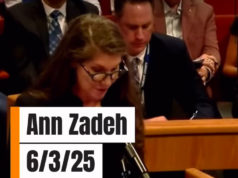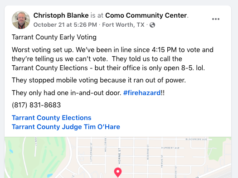They’re not co-pays or premiums yet there’s no doubt that polluted air and water exact a high price on our health. Still, the arguments over how to deal with that part of the healthcare equation have gone back and forth for decades, flaring up again when new evidence or a new report surfaces. Last year, for instance, an Institute of Medicine study on links between the environment and breast cancer concluded that while some toxins cause cancer, it’s impossible to match one specific chemical to one specific case of cancer.
But now the Affordable Care Act has changed the rules of the game. With a guiding principle is “do no harm,” it sets out a new standard for evaluating research on the alleged harmful effects of pollution. It’s similar to the different standards of evidence in civil and criminal law. In the past, something like the criminal-law standard of “beyond a reasonable doubt” prevailed. Now the federal government standard for research will be the same as in civil law: If a preponderance of the evidence suggests that some substance is harming people’s health, that’s a basis for action.
The details are found in a document called the National Prevention Strategy, released last year as part of a 2010 Presidential mandate. It notes that “Safe air, land, and water are fundamental to a healthy community environment.”
Included as a goal of the strategy is to increase the availability of health professionals to identify and reduce environmental health threats. Clinicians, it syas, can help people understand how to prevent, treat, and manage health problems resulting from exposure to pollutants.
If all goes well — and that’s a big if considering how strongly our political climate favors polluters — this strategy can help turn back the tide of toxins in the environment. For instance, it took 21 years for the new federal mercury standards to become law and already it’s facing a congressional review, requested by Sen. James Inhofe, an Oklahoma Republican. Congress now has until mid-April to decide the fate of the new rule, which promises to eliminate 90 percent of mercury emissions from coal-fired power plants.
The new mercury standards are expected, within a few short years, to greatly reduce the incidence of some health problems in this country, including asthma attacks and heart attacks. By 2010, according to estimates by the Union of Concerned Scientists, environmental improvements brought about by the Clean Air Act had prevented 160,000 premature deaths, 130,000 heart attacks, and 1.7 million asthma attacks.
The National Strategy provides hope, if it is sustained by future administrations, of progress against many pollutants, even though neither the strategy document nor the Affordable Care Act grants new government enforcement powers regarding clean air and water.
Still, the raw ambition of this plan is exciting. My recommendations for making it work:
• Involve environmental engineers in this prevention strategy. They’ll find solutions for industries rather than just handing down edicts from on high. Face it, environmentalists — we’ve won. It will be a long slog, but we now have public health laws on our side.
• Address environmental racism and low-income biases. Incinerators, for example, are more likely to find homes in politically weak neighborhoods, which not coincidentally are where racial minorities and the low-income live.
• Stress job-creating abilities and have fighting words ready when attacked by moneyed interests. Better yet, sell it to the American public now, emphasizing the state and local impacts. Otherwise, it’s not real. The truth is, pollution controls don’t cut into job creation. Instead they cut into short-term corporate profits, meaning companies don’t plough their profits back into their operations. Hence their leaders oppose pollution controls.
• Create freedom from the whims of Congress. Last year’s adoption of the Mercury and Air Toxics Standards will force America’s dirtiest power plants to dramatically cut the most toxic air contaminants. But these life-saving standards can be overturned with a Congressional Review Act. The President ought to have the ultimate authority not the moods of a compromised Congress.
• Create incentives for business, not only penalties. Part of the billions of dollars collected in fines each year should be used to entice businesses to invest in environmental cleanup technologies. It could do wonders for their quarterly financial statements and thus their motivation to do good. This wiggle room for corporations could end the “job killer” canard once and for all, when it comes to pollution controls.
Mary Ann Swissler of Madison, Wis., has written extensively about grassroots activism on cancer, money in politics, and the environment. She can be reached at eyewryt@gmail.com.











